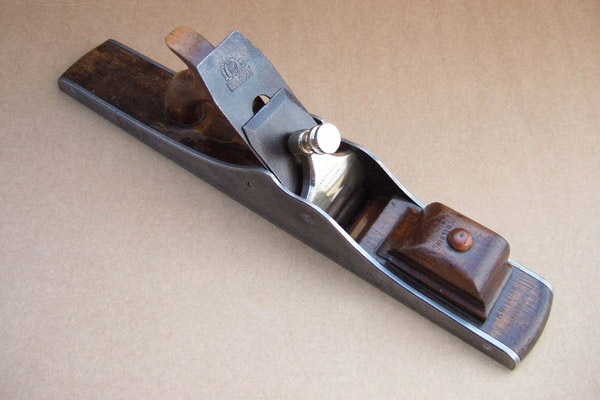
Of all the infill planes made by Charles Bayfield of Nottingham that I’ve had the pleasure of examining, or have seen on the internet over the years, there are two main stylistic features I’ve noticed — the chunky, double knurled lever cap screw heads, and the shape of the front buns in (primarily) Bayfield’s jointing and panel planes.
It could be said that these two things in particular help to identify a Bayfield plane — especially when a stamp has been damaged and is no longer legible or if it has not been applied at all (and yes I have seen one plane that was unmarked but was undoubtedly a Bayfield plane).
Unfortunately however almost nothing is known of Mr. C. Bayfield and his planes. His entry in W.L. Goodman’s “British Planemakers From 1700” (3rd Edition) simply states: “Bayfield, C., Nottingham. Late 19th or early 20th century. Name noted on an iron jointer plane.” — which of course tells us very little.
Personally I’m of the belief that these are early to mid 20th century planes, rather than late 19th century. Certain details, such as the turning of the lever cap screws and the choice of infills, lead me to this reasoning (though it’s far from conclusive and I would not state my reputation on it. It’s just an opinion)
However, having said that, this could be the actual jointer plane noted in “British Planemakers” (or definitely a cousin of it). Infilled with walnut, this 20″ long and 3″ wide jointing plane probably dates from around 1920 and weighs in at just under 4 kgs. Like many infill jointing planes this one has seen very little use — and I can tell you from experience that your arms get tired quite quickly wielding these things around for any great length of time!
Needless to say infill planes from this maker are not that common at all.











